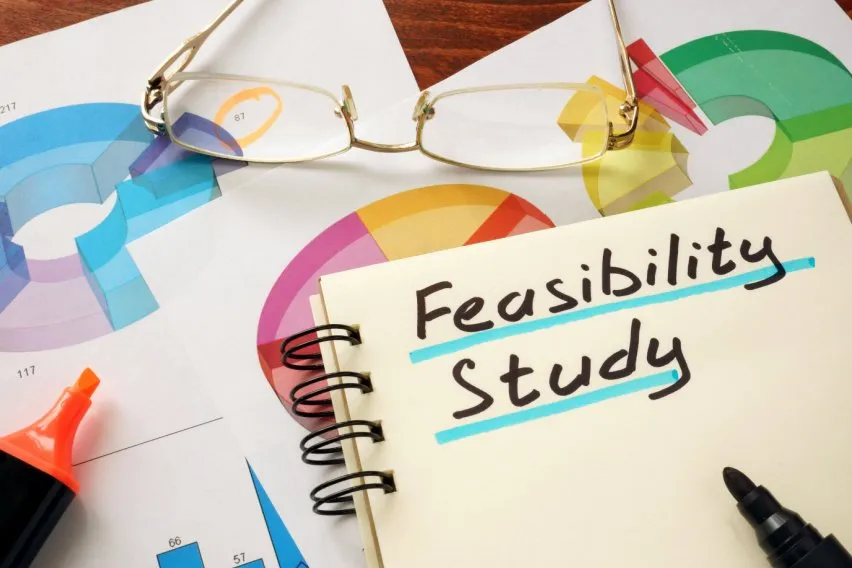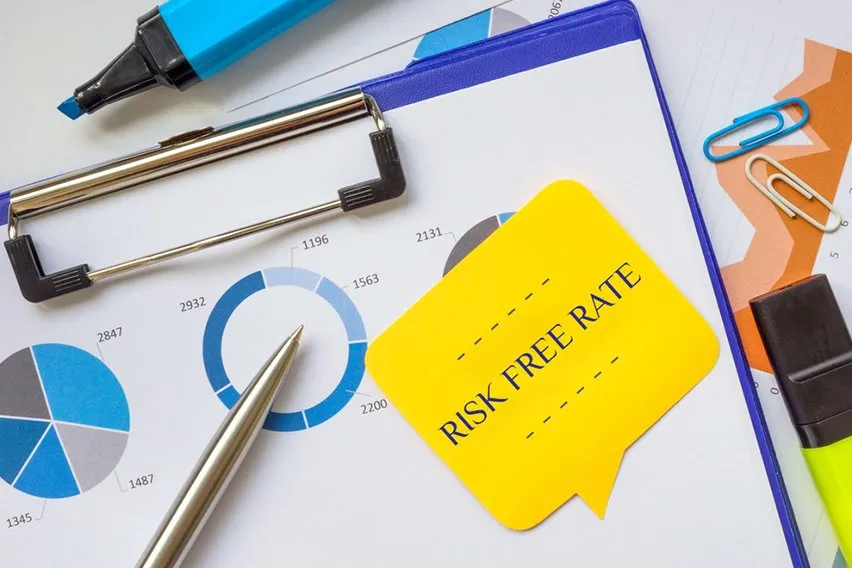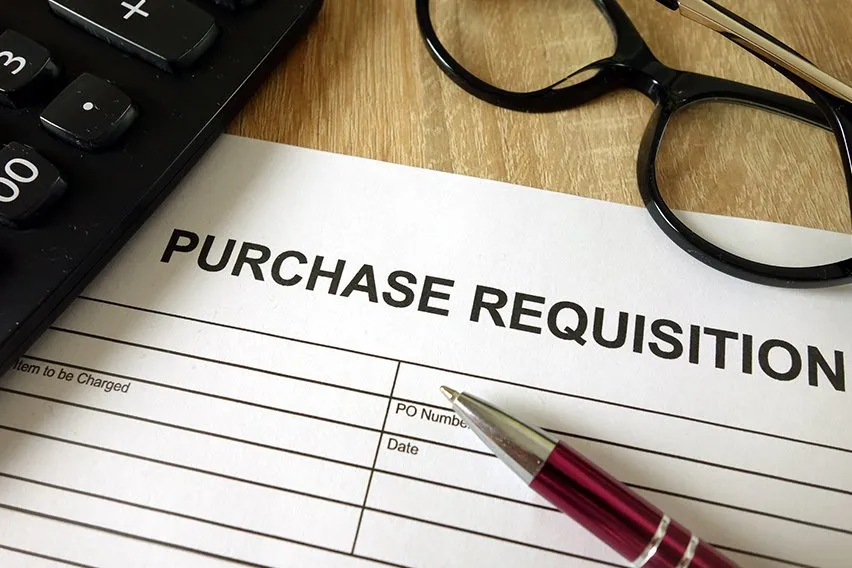Feasibility Study: Meaning, Types & Process

Growing your company yields tremendous benefits, like increasing your market presence and profits. But it also makes it harder to run your organisation.
Your project managers need to ensure that your initiatives are doable. They can use several strategies to achieve this, one of which is to conduct a feasibility study.
In this entry, we’ll explain the basics of a feasibility study and list the most common types. We’ll also show you how to carry out your feasibility study.
Table of Contents
Elements of a Feasibility Study Report
How to Conduct a Feasibility Study
Benefits of a Feasibility Study
FreshBooks Offers Solutions for Business Owners
What Is a Feasibility Study?
A feasibility study is an evaluation of proposed projects. It assesses various critical factors. These factors dictate the chance of success in the early stages of a new business venture.
The main factor a feasibility study considers is project practicality. In other words, it evaluates whether a business venture is viable.
We determine whether a project is viable using market research of the proposed project. For this, we look at marketing strategy, a project’s cost, and data collection. We also look at the organisational structure and other feasibility factors of the project plan.
After conducting a feasibility study, you’ll know whether your idea is a good business opportunity. The study ensures your project is technically and legally viable. And it tells you if you have enough funds and other resources to finance the venture.
Sometimes, your projects might not be doable. They may be too resource-intensive, keeping you from allocating money to other departments. In other cases, you might not earn enough money to make the investment worthwhile.
Studies can involve many details, including the historical background of your project. Such studies often precede project implementation and technical development.
Here are a few other details you can find in a feasibility study:
- Description of your products or services
- Accounting statements
- Information about management and current operations
- Marketing policies and research
- Market surveys
- Legal requirements
- Tax obligations
- Financial data

Types of Feasibility Studies
A feasibility study can have different operational and technological considerations. These depend on the type of study you want to conduct. Let’s take a look at each type of study.
Technical Feasibility
This type of study concerns technical resources available to your organisation. It reveals if you have enough technical resources to accomplish a proposed plan. It also shows if your management team can convert ideas into operational systems.
Financial Feasibility
There is also financial feasibility. As the name suggests, it tells you if you have enough money to cover your project’s costs. This preliminary analysis can also forecast the return on investment (ROI) and risks.
Financial viability studies have a simple goal. They highlight the economic advantages of your venture. Project management can use these studies to adjust ventures. Your team can also rely on them to see if there’s a more viable alternative.
Market Feasibility
Market feasibility evaluates how your project may perform in your target market. It also helps in developing a marketing strategy. The report includes the following points:
- Market research
- Sales projections
- Breakdown of market competition
Organisational Feasibility
Organisational feasibility assesses if you have enough management capacity to launch a venture. This study should test your project managers based on their ability to execute ideas. The analysis can consist of several considerations:
- The enthusiasm of your project managers and other team members about your idea
- Industry expertise
- Professional experience
- Educational background
You need to be objective when conducting an organisational feasibility study. Be honest about your company and your team’s skill sets. Otherwise, you might lose a lot of money trying to launch a venture your organisation can’t afford.
Elements of a Feasibility Study Report
A feasibility study report consists of the following elements:
- Executive summary
- Description of product or service
- Technology considerations
- Product or service marketplace
- Marketing strategy
- Organisation or staffing
- Schedule
- Financial projections
- Findings and recommendations
The main part of a feasibility report is the executive summary. This section introduces the appropriate stakeholders and decision-makers to your project. It also provides the resources to back the legitimacy of your feasibility.
How to Conduct a Feasibility Study
When you want to launch a new product or service to meet the expansion plans of your company, a feasibility study lets you do so. Below, we detail how to conduct one.
Preliminary Analysis
Creating your feasibility study takes time. Before you dive into the study, you need to assess your project to reveal any roadblocks. That’s where a preliminary analysis comes into play.
You can use a preliminary analysis to learn if the project needs more money than anticipated. You’ll discover if you need to change something or end the project to avoid straining finances.
A preliminary study doesn’t just offer financial projections. It also lets you figure out if you can complete the project on time. The venture isn’t viable if the preliminary analysis shows you can’t meet deadlines.
Discovering large-scale obstacles is a key part of the feasibility analysis. This step will help with project management so you meet your goals.
Financial Feasibility
A financial feasibility study serves as your projected income statement. It clarifies project financials, such as what you need to invest in to achieve certain goals. It includes the amount of money and time necessary for the project.
When performing an economic feasibility report, consider if the venture impacts cash flow. Your project management team might also want to consult your financial team. They may need a detailed cost-benefit analysis to assess viability.
Market Assessment
Market evaluation allows you to identify the current demand. It outlines the amount of profit you can expect by completing a project. Additionally, it can involve the risks you may encounter.
The feasibility report is a great way to find profitable markets. You can use it to assess the position of your competitors and their/your demographics. Both of these will indicate the direction your project may take.
Prepare Your Opening-Day Balance Sheet
An opening-day balance sheet shows the position of your company at the start of the project. Its purpose is to tell you how much money you have available from the get-go. It’s a basis for tracking income and expenses.
The data in the balance sheet is key to making informed decisions. Here’s what it should include:
- Cash on hand
- Inventory
- Accounts receivable
- Accounts payable
- Prepaid expenses
- Fixed assets
- Notes payable
- Shares
- Long-term liabilities
Operational and Technical Evaluation
Your target market and financial resources may look good. But that alone doesn’t mean you’re ready to start the project. You still need to perform an operational and technical evaluation. Doing so indicates if you can afford the initiative.
For example, you may need to consider the equipment and staff necessary for your project. The analysis may involve time feasibility and outline the necessary skills.
You might also want to think about the potential legal effects of your initiative. This especially holds true if your project involves developing patents for your products. If that’s the case, you need to conduct legal feasibility. This step will reveal if the venture meets legal requirements.
Review of Risk Points
At this point, your project management team has analysed several elements. These include:
- Financials
- Operational feasibility
- Market analysis
Before they make recommendations, they should review the information for any weak points. They need to pinpoint any liabilities and develop a contingency plan.
You might not always get a clear-cut answer—especially if you want to complete a complex project. But at least reviewing potential hurdles allows you to reconsider your initiative again. This step should also pinpoint answers that will help you make smart moves.
Decision-Making
The final stage summarises the operating costs, projected benefits, and organisational structure. It should touch on critical points for project management and propose a solution.
In some cases, you may want to share the study with stakeholders or other members of the business. This way, they will see how much they can gain from your project.
Benefits of a Feasibility Study
There are many reasons to do a feasibility study before every project, including:
Listing Potential Benefits
Just because you can complete a project, doesn’t mean you should. It might strain your resources in other areas. It can also prevent you from pursuing future projects that would offer a larger ROI.
A project feasibility study demonstrates the risk-to-reward ratio, overall return, and opportunity costs. These tell you whether you should begin, postpone, or scrap your venture altogether.
Identifying Optimal Timing
If your feasibility study doesn’t consider the time of year of the project, reevaluate it. The projected results may change depending on the season.
For example, a project might be easier to do in winter than in spring. It may cause less stress on your project management team and help in other key areas, such as:
- Financing options
- Supply chain
- Production capacity
Projecting Cash Flow
A feasibility analysis is beneficial because it shows your cash flow at the start of the project. It determines if you need to delay your venture until you collect more cash.
For instance, the proposed project sales might be good in January. However, you may also need to repay your creditors that same month. This can limit the amount of available cash and prevent you from financing your project. A feasibility study can predict this and prevent any issues.
Analysing Labour
A feasibility study doesn’t just look at the number of team members available for a project. It also tells you if they’re skilled enough to carry out the venture.
Suppose you’re launching a new magazine. You have a large number of graphic artists with free schedules. They have plenty of time to work on the project, but they may not have mastered the following elements:
- Creating magazine grids
- Print typography
- Developing departments, feature layouts, columns, and other sections
A feasibility study provides an overview of their experience and skill sets. You can use this information to determine if your staff has the expertise to launch your product.
Managing Supply Chain
Some projects might seem like sure things. The finances and technical resources check out, so everything looks great.
But these projects may still stress your company. For instance, they may need a lot of marketing planning. If the marketing staff already works at full capacity, they’ll need to multitask. This can lower their productivity.
Also, the project can strain your production, warehousing, shipping, and billing. A feasibility study clarifies whether the project is worth the effort.
FreshBooks Offers Solutions for Business Owners
Does all this preparation seem overwhelming? If it does, consider FreshBooks’s Project Management and Team Collaboration software.
This all-in-one solution allows you to organise your files and documents in one place. Plus you can collaborate with team members and stakeholders and track project profitability. In the end, you’ll save tons of time and money.
Key Takeaways
Launching a product or service sometimes feels like taking a shot in the dark. But you can reduce a lot of your uncertainty with a feasibility study. This study helps you evaluate projects by looking at several critical factors.
A feasibility study should include data like market research and a company’s financial resources. It should also include technical requirements and operational feasibility. All this data helps you make the right decision and reduce unnecessary costs.
Integrate with software from FreshBooks for all your feasibility study needs.
FAQs About Feasibility Studies
Who Conducts a Feasibility Study?
The project management team conducts feasibility studies. But sometimes they may delegate the process to senior staff. This happens if they don’t have the right knowledge or time to complete the study.
What Is ROI in a Feasibility Study?
The ROI in your feasibility study tells you the profitability of your investment. It compares potential gains to costs. To calculate ROI, you need to divide the return on investment by the cost of your investment. The results are then expressed as a ratio or percentage.
Is a Feasibility Study Qualitative or Quantitative?
A feasibility study can be both qualitative and quantitative. For example, it can reveal the number of workers required for a project (quantitative). And at the same time, it can reveal the profiles of these workers (qualitative).
What Is the Difference Between a Business Plan and a Feasibility Study?
A business plan keeps track of financial and operational goals. It also outlines plans for how to achieve these goals. On the other hand, a feasibility study reveals whether the goals are possible.
RELATED ARTICLES


 What Is Direct Debit Guarantee & Direct Debit Rules?
What Is Direct Debit Guarantee & Direct Debit Rules? What Is a Risk-Free Rate of Return? Definition & Example
What Is a Risk-Free Rate of Return? Definition & Example What Is a Control Account?
What Is a Control Account? What Is a Purchase Requisition Form? A Guide
What Is a Purchase Requisition Form? A Guide What Is Net Book Value? Formula & Importance
What Is Net Book Value? Formula & Importance What is Liquidity Coverage Ratio (LCR)?
What is Liquidity Coverage Ratio (LCR)?